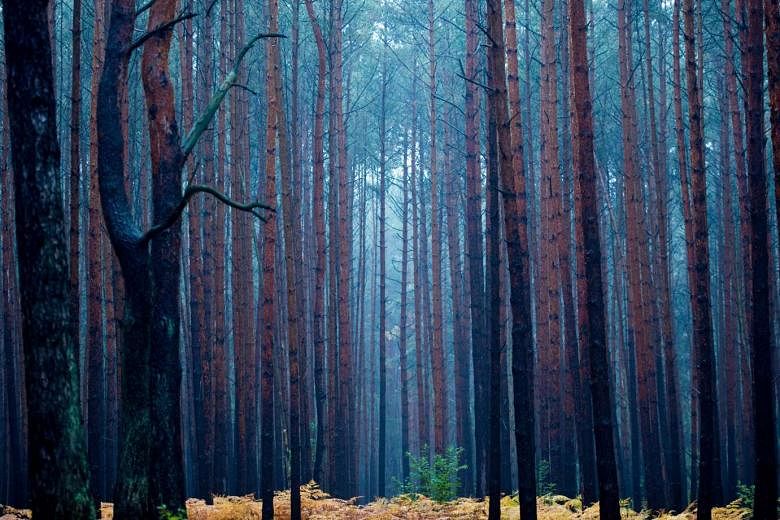By Diemut Klarner
Rainforests in the south of Chile not only store an exceptional amount of carbon dioxide (CO2) in the form of wood.
They also absorb the greenhouse gas over an exceptionally long time - over several centuries.
So say scientists from the Austral University of Chile in Valdivia and from the University of Oxford in the online journal "Plos One".
Rocio Urrutia-Jalabert and his colleagues have been studying a typical forest in the Alerce-Andino National Park, not far from Puerto Montt, that is dominated by Patagonian cypress trees (Fittzroya cupressoides).
Growing up to fifty metres high, these trees can have trunks measuring five metres across and can live for more than 3600 years.
Only Great Basin bristlecone pines (Pinus longaeva), found in the dry mountainous regions of California, Utah and Nevada, can live longer.
Patagonian cypresses hold the record for longevity among trees that form thick forests.
But the Patagonian cypress now only rarely reaches a ripe old age, after European migrants discovered the beauty and durability of its wood.
Chile declared the tree a natural monument in 1976, but this did not prove to be a particularly powerful form of protection.
It is technically still legal to make commercial use of cypresses that have already died or been felled, and has been all too tempting to meet the continuing demand for their wood by forcibly speeding up their life-cycle.
It is for good reason that the International Union for the Conservation of Nature (IUCN) has placed the Patagonian cypress on the red list for endangered species.
An immense carbon sink
The scientists have been using illegally felled trees to measure the trunk and crown of these cypresses exactly.
They can then use these data to estimate the biomass of living cypresses.
According to their calculations, the area of forest they examined holds up to 517 tonnes of carbon per hectare in the form of wood.
The cypress forest on the lower slopes of the south Chilean Andes counts among the forests with the largest wood stocks in the world.
Its carbon storage capacity is correspondingly large.
Poor soil, eroded by around 6,000 mm of rainfall each year, means only small yearly growth is possible in spite of the mild climate.
Huge piles of wood tend to accumulate, because decomposition takes a correspondingly long time.
In the cypress forest investigated by the scientists, the average lifespan of the wood was between 539 and 640 years.
These calculations also take into consideration Southern beeches and other trees that flourish beneath the canopy of the great cypresses.
The wood of the cypress tree, considered alone, has an average lifespan of almost 1,400 years.
Rainforests where the Patagonian cypresses mainly grow are exceptional for storing so much carbon dioxide over such a long time.
The total amount of carbon stored in rainforests balances out in the long term.
Trees use carbon dioxide from the air to produce wood, among other things.
Sooner or later wood from dead trees is then broken down by animals and microorganisms and the absorbed CO2 is once again released.
Largely undisturbed by humans, the Patagonian cypresses have been growing in inaccessible mountain slopes in the southern Andes.
Urrutia-Jalabert's team is therefore not only calling for changes to the law to better protect the remains of old trees from burning and illegal logging.
It is also putting forward the case for regenerating the cypresses in the hilly areas along the coast where vast areas of dense forest have been burnt down over the centuries.
In the wide valley stretching between the range of hills and the Andes, there is almost nothing left of the earlier rainforest.
But even here, towering cypresses could once again gradually grow back in many places.
This additional sink for carbon dioxide would be just as valuable for biodiversity as for climate protection.
Courtesy of Frankfurter Allgemeine Zeitung, a member of the Climate Publishers Network. The network is a content-sharing partnership among international news publishers, including The Straits Times, on climate change stories ahead of the 2015 UN climate summit in Paris.

